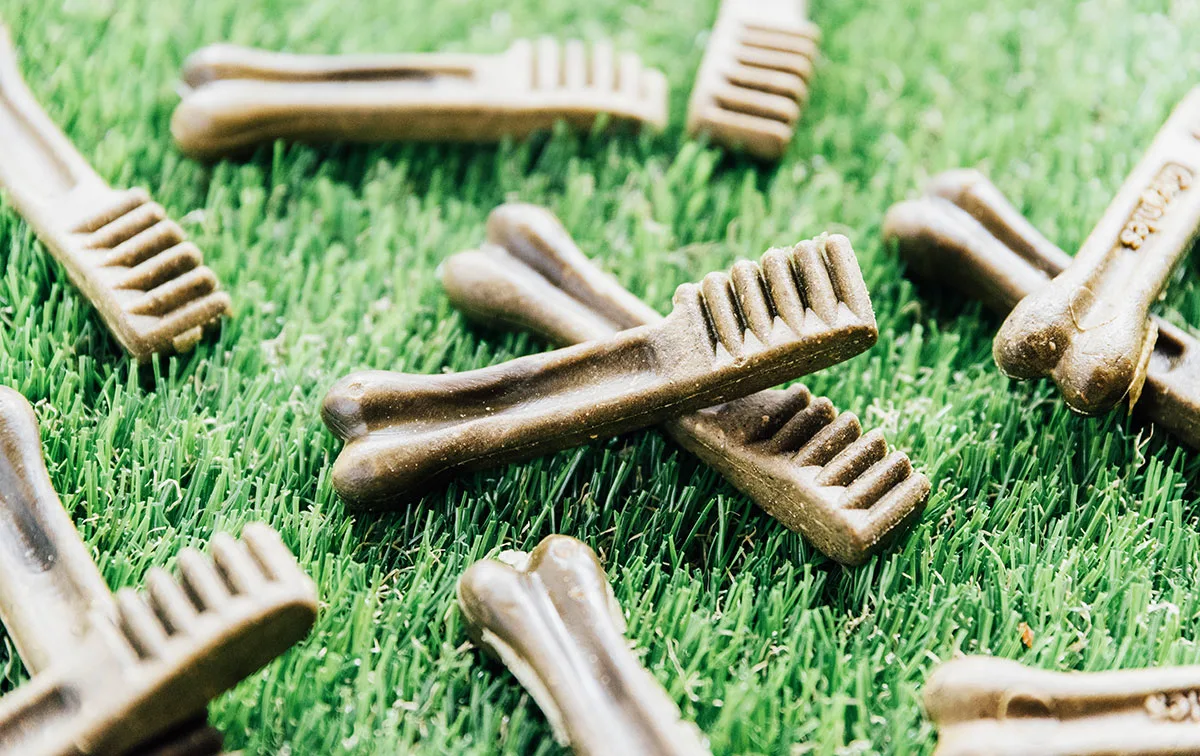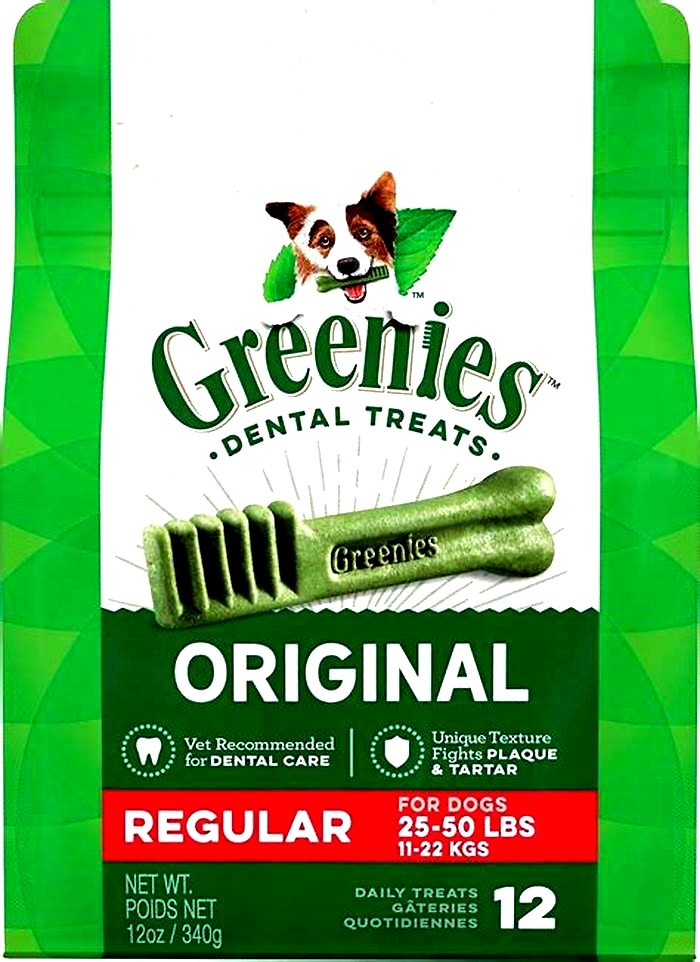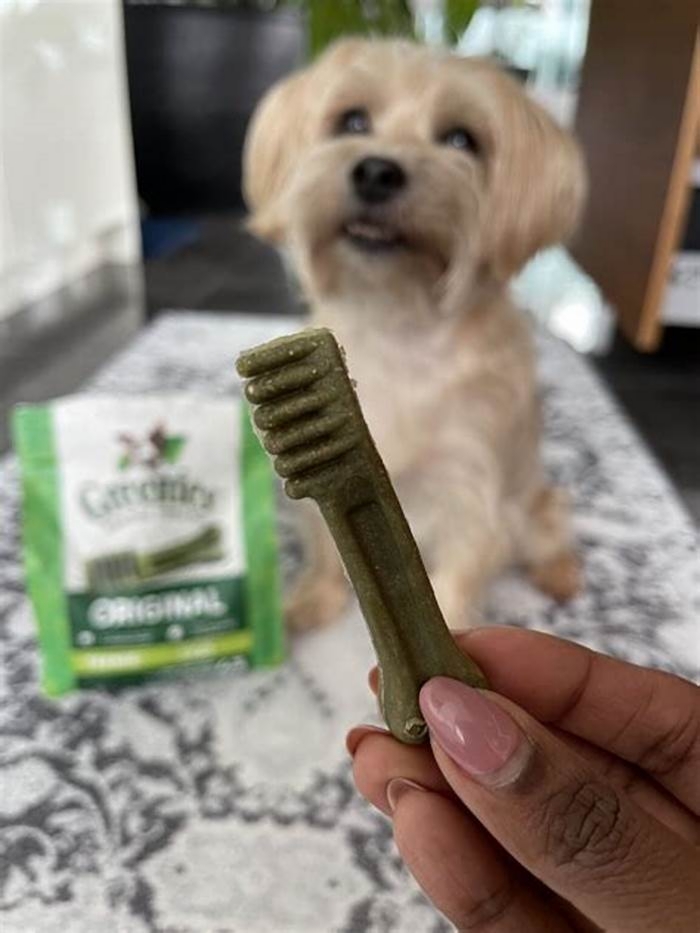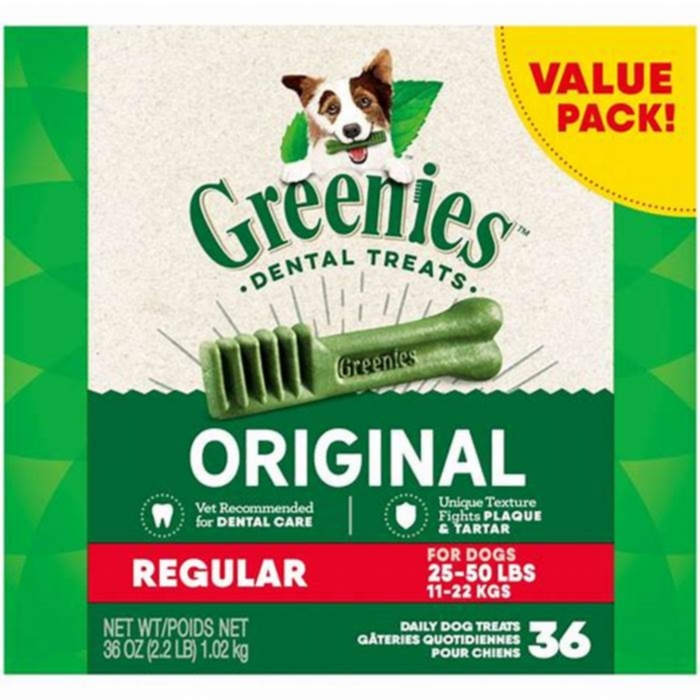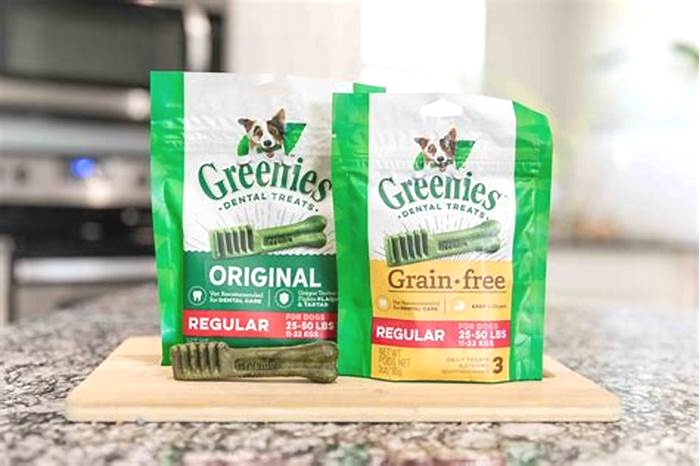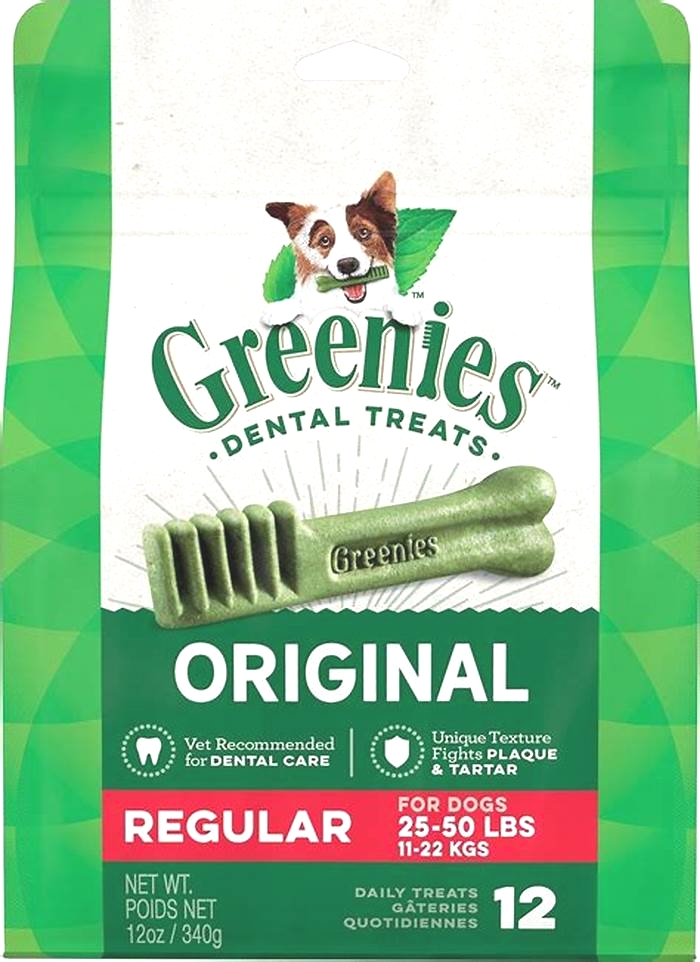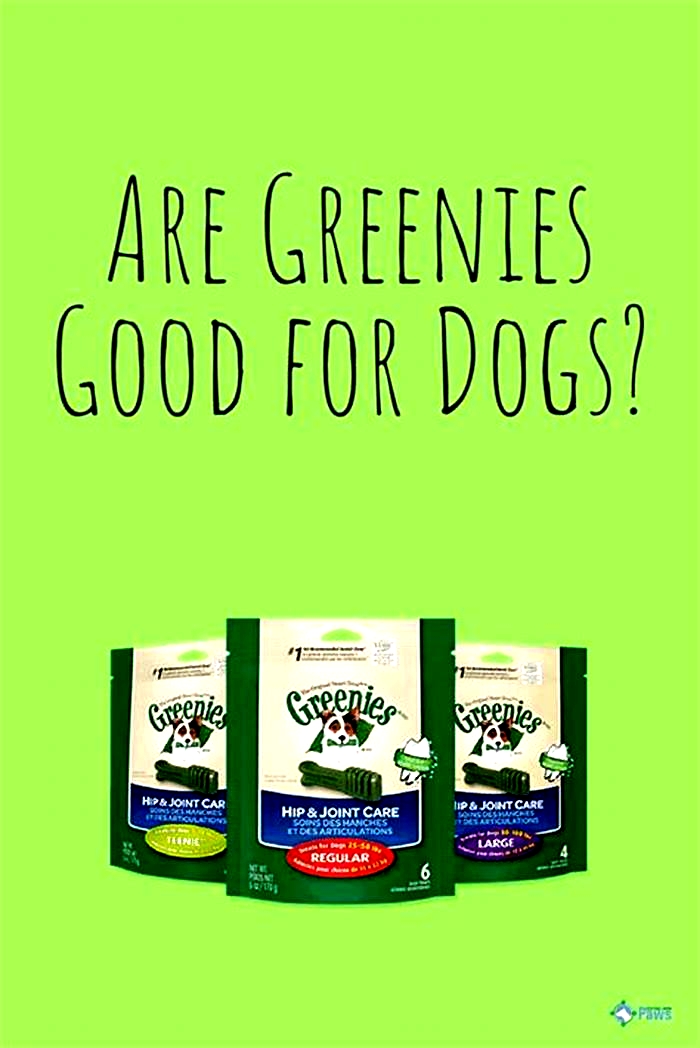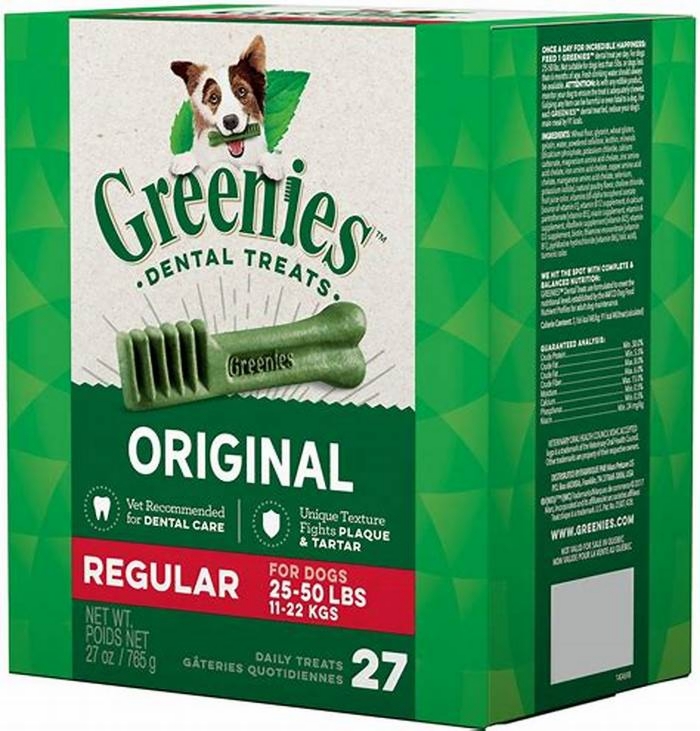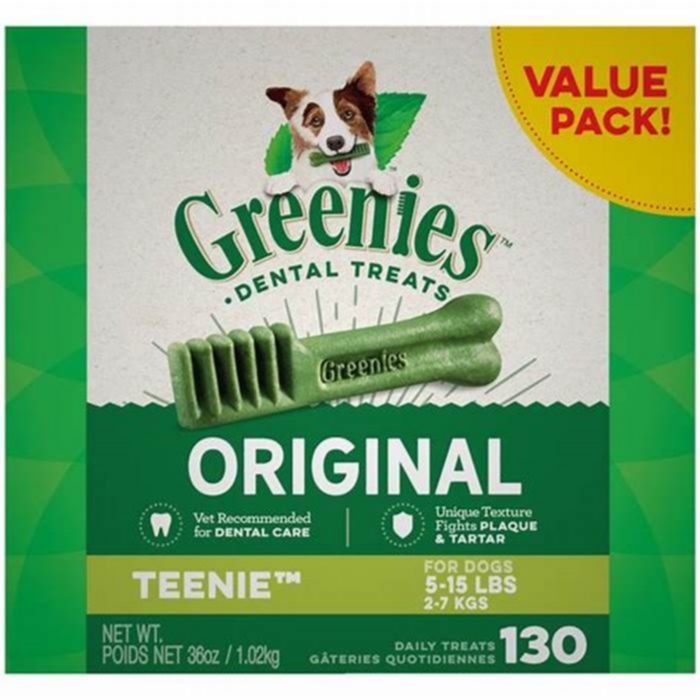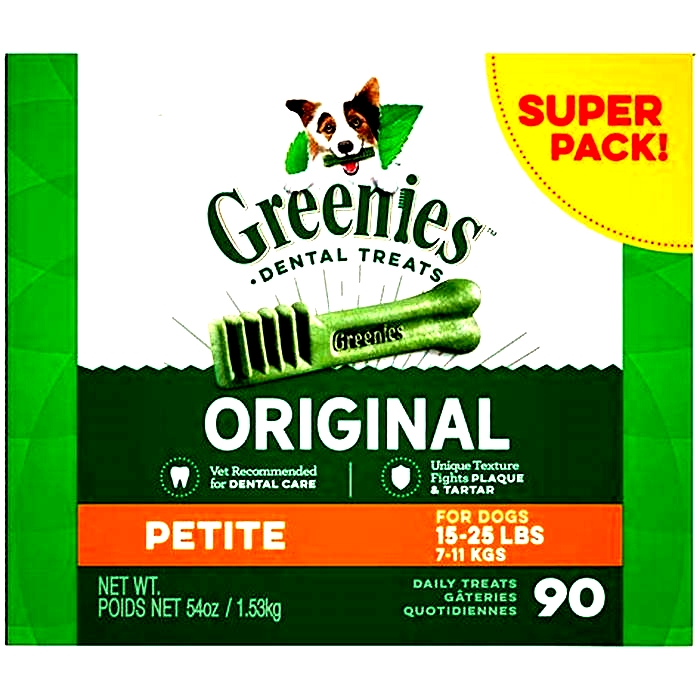how do greenies work for dogs
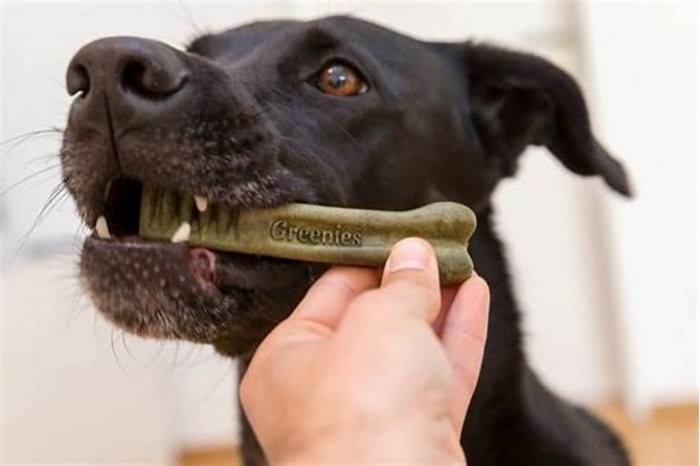
Greenies Dog Treats Are Actually BAD For Your Dog
This post may contain affiliate links. If you click and buy something that I recommend, I might receive a small commission.

If you are a dog owner, then you are probably familiar with Greenies for dogs, the green toothbrush-shaped dental chews found in most big-box pet retailers like Petsmart and Petco.
Greenies for dogs is one of the most popular dental treat brands.
But, should they be so popular? Is their product really that great, or is it a result of clever marketing and packaging?
What if I told you giving your dog Greenies dog treats for dental care, is actually doing more harm than good?
Greenies & Dog Dental Care
The main reason why pet parents purchase Greenies dental chews is for the dental care benefits that Greenies boasts their product provides.
On their website, Greenies.com states:
Dental treats or dental chews work with mechanical action similar to how your toothbrush works, where it will scrape the surface of the tooth and help brush away plaque and tartar that can accumulate that can lead to more serious problems.
Greenies.com
This entire statement focuses on the benefits of chewing, but fails to address the most important topic What is your dog actually chewing on.
Greenies also brag about their seal of approval from The Veterinary Oral Health Council.
However, on the first page of VOHCs website, they state:
When VOHC authorizes the use of its Registered Seal, VOHC makes no certification, representation or warranty as to the safety and certifies only that, upon application for the right to use the Registered Seal, the product met VOHCs Standards for effectiveness in retarding plaque and tartar when used as directed.
VOHC Website
There is no denying that chewing or gnawing has proven to be an effective method for keeping a dogs teeth clean, gums healthy, and freshen breath.
However, it is important to understand that dogs are consuming what they are chewing on.
So yes, chewing on say, a shoe, may be beneficial for your dogs teeth and gum health, but that doesnt mean it is healthy for your dog to be consuming shoes.
Moreover, consuming some ingredients, sugars, and carbohydrates specifically, can actually promote plaque and tartar build-up.
So, in the short term, dental chews like Greenies dog treats might effectively remove plaque and tartar from your pups teeth.
But, in the long term, they are actually contributing to the overall plaque and tartar problem.
The Ingredient Label Of Greenies Dog Treats
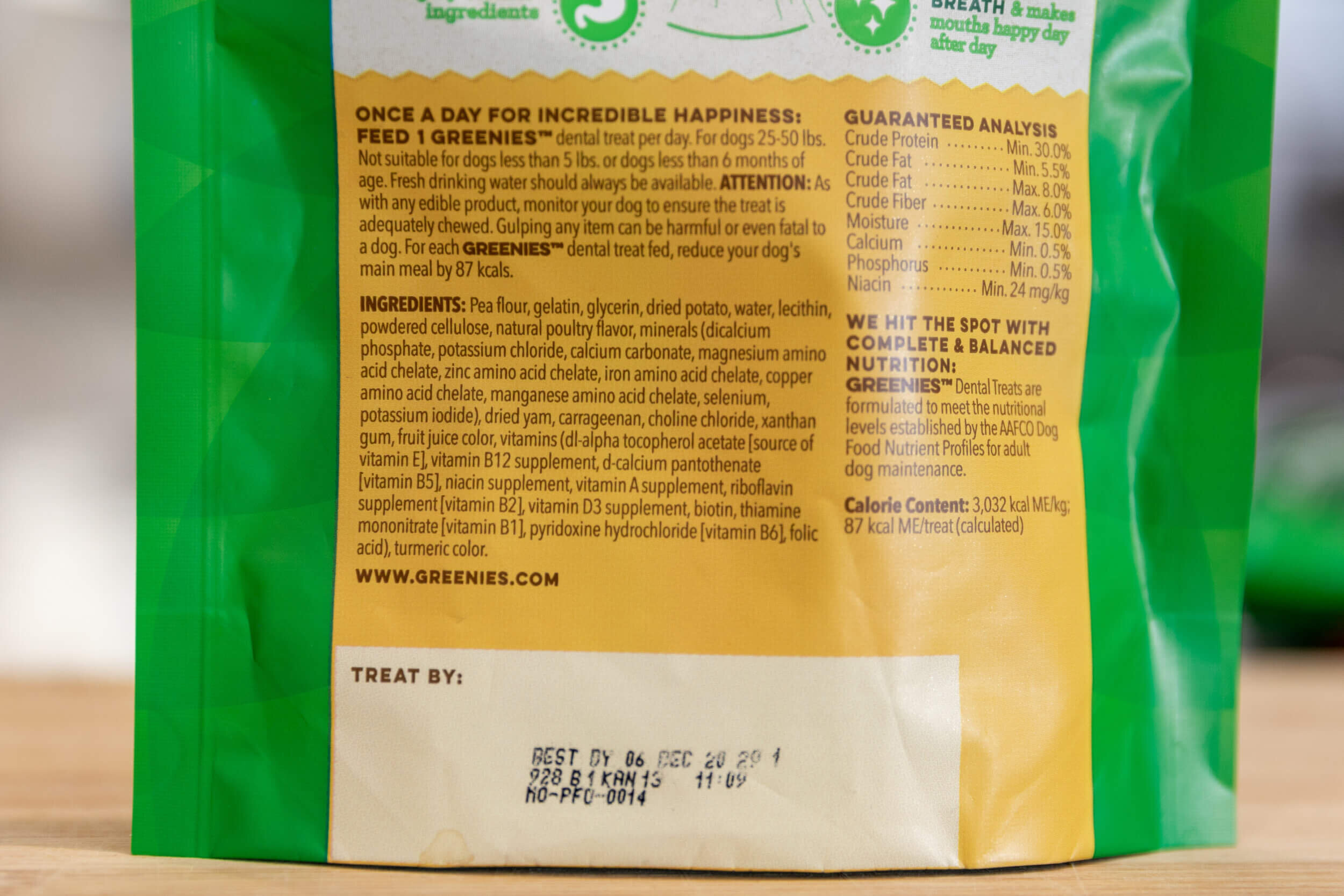
Pea Flour
Consumers havebecome savvier and more informed about the ingredients they are giving their pets.
Many are refusing to buy products with ingredients such as meals, by-products, and cheap fillers.
To replace these lower-quality products, things like grain-free pet products have grown in popularity.
Because of this, pet product manufacturers have been looking for ways to replace those cheap fillers and grains that consumers have identified as undesirable with something more appealing.
So, what did those manufacturers do?
They took out the cheap grain fillers (previously wheat flour and wheat gluten in the original Greenies) and replaced them with pea flour and pea protein (another cheap filler).
The marketing team slapped a grain-free label on their new product and started pushing it out to retailers nationwide.
Dont believe me?
Check out this Original Greenies ingredient label (below) and compare it with the Grain-Free one (above).
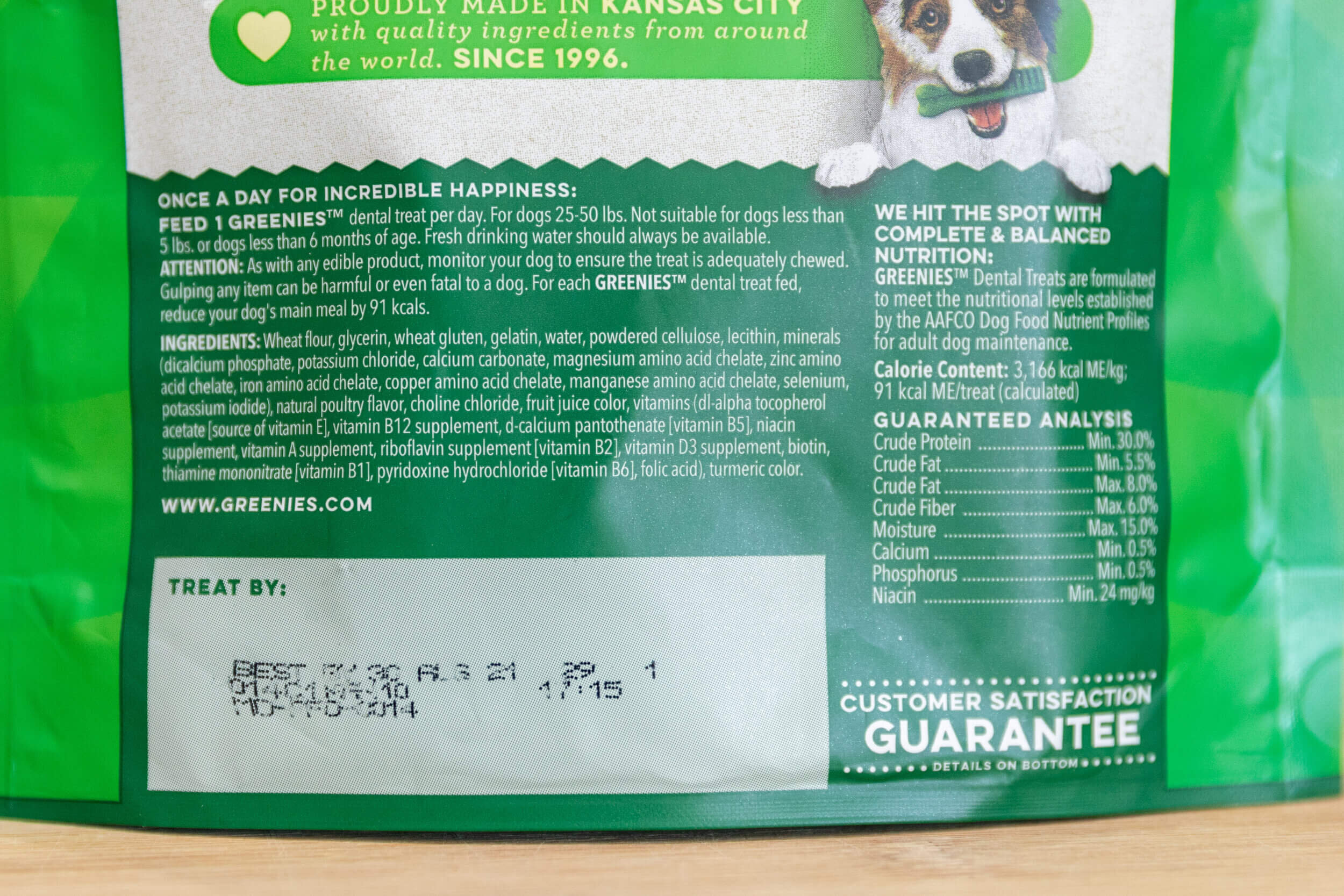
Why is pea flour/pea protein bad for my dog?
It is important to understand that pea protein is avegetable protein, not an animal protein.
Because of this, pea protein is harder to digest for dogs.
Your dogs body wont be able to break down and absorb all of the protein they are consuming.
So, most of the protein they are consuming is wasted.
Pea flour isnt just a bad source of protein, it is also full of carbohydrates.
When digested, the carbohydrates found in pea flour are broken down into sugars in the mouth which fuel plaque and tartar build-up on your dogs teeth.
Pea flour is nothing more than a cheap filler disguised as a protein that actually makes your dogs dental health worse.
So, why is it found in your dogs chew?
Manufacturers add pea protein to artificiallyinflate the protein percentages in grain-free pet products.
The protein found on the label is not the actual amount of protein that your dog is able to digest and use.
The remaining undigested protein serves no purpose for your dog, no nutritional value, and will eventually leave your dogs body as waste.
You wont find pea fiber in high quality commercially available pet foods, nor will you find it in healthy recipes for homemade pet meals. Where you will find it is in very affordable, highly processed, low-quality pet food, saidDr. Karen Becker, DVM
Once again, pet product manufacturers have found a new way to trick pet parents into thinking their products are better and healthier than they actually are.
Gelatin
Gelatin isnt a horrible ingredient for your dog to consume. Actually, it can be quite beneficial (assuming its sourced safely and naturally).
Gelatin comes from collagen which is rich in animal protein and amino acids.
Greenies manufacturers add it as a gelling agent which causes their product to be gummy and chewy.
You can provide your dog with a natural source of gelatin by feeding bone broth (which you can make at home).
Glycerin
If your dog has ever had an upset stomach after consuming Greenies, then glycerin is likely to blame.
Glycerin is a form ofsugar alcoholthat dogs (and humans) cannot fully absorb. It offers the same nutritional benefits as sugar, with even more calories.
Glycerin attracts water like a sponge. When consumed, glycerins moisture-attracting properties pull water from the body into the colon, acting as a laxative and stimulating bowel movements (i.e. gas and diarrhea).
If diarrhea wasnt bad enough, the sugar in glycerin is also very bad for your dogs dental health. The high carbohydrate content directly fuels plaque and tartar build-up, further worsening the overall health of your dogs teeth and gums.
So, why is it found in your dogs chew?
Because glycerin has that moisture-attracting property we talked about earlier, adding glycerin to foods helps them stay moist.
Generally speaking, glycerin is widely used in food manufacturing as a preservative.
Although glycerin helps the manufacturer control the moisture content in their product, it offers no nutritional benefit to your pet.
It is just a moisture-absorbing sugar.
Dried Potato
Dried potato is another starchy filler that is very similar to pea flour. It offers little nutritional benefit for your dog.
Just like glycerin and pea flour, the carbohydrates found in potatoes also break down into sugars that fuel plaque and tartar build-up.
This actually works AGAINST your dogs teeth and gum health.
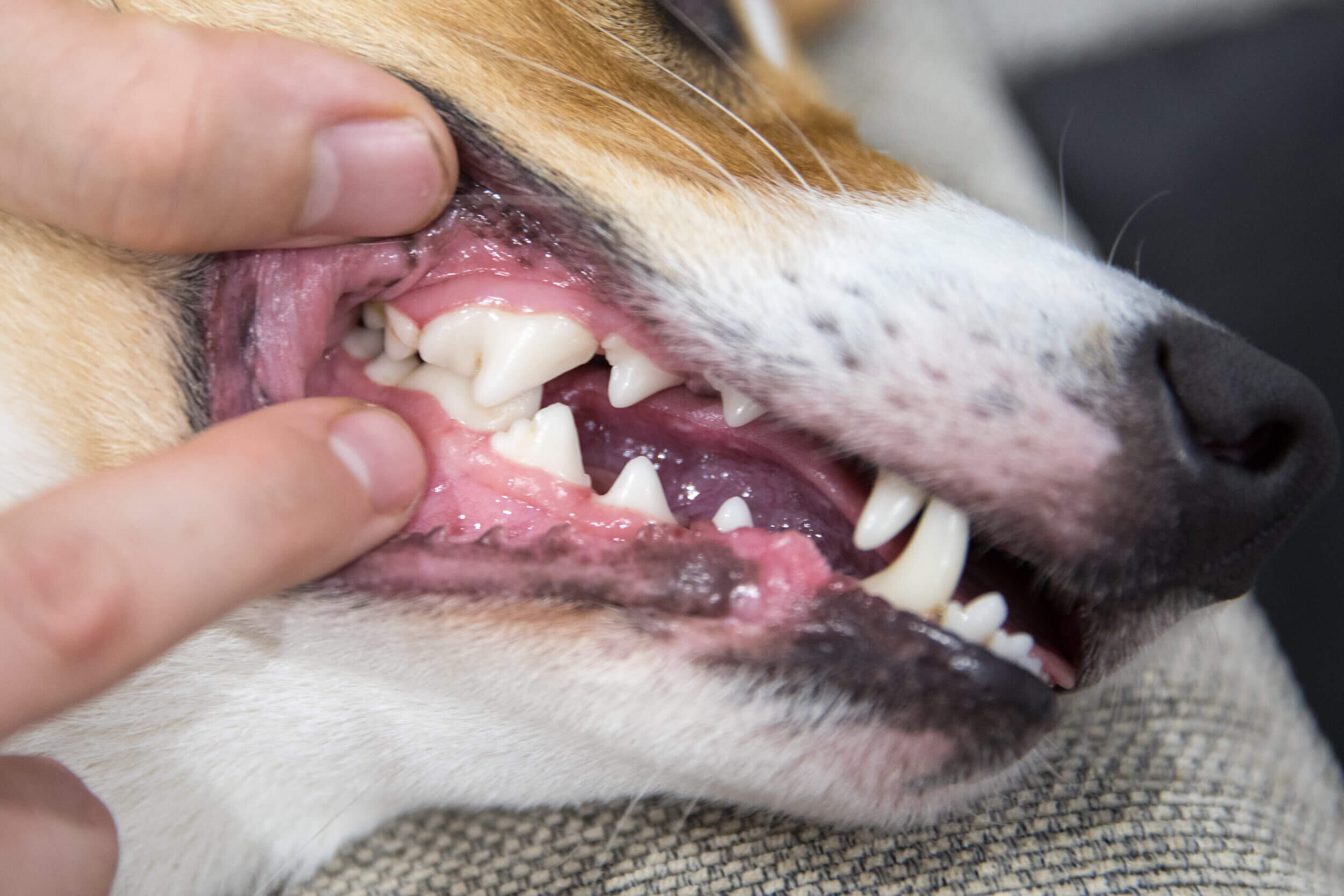
Alternatives To Greenies Dog Treats
Unfortunately, Greenies success is likely the result of well-designed packaging and clever marketing. Not because their product is of high quality.
Now, just because Greenies for dogs are off the list, that doesnt mean you are out of options.
There are lots of other safe and healthy for you to give your dog.
Here are 5 ways you can control, reduce, or eliminate plaque and tartar in your dogs mouth:
1.Healthy Diet
The foundation of a healthy mouth starts with a healthy diet.
It is important to avoid foods with highly processed ingredients such as corn and potatoes.
Bacteria are known to thrive on carbohydrates (namely sugar and starches).
So, when your dogs food gets stuck in their teeth, it provides a place for plaque to feast and tartar to develop.
By feeding your dog a balanced, high-quality diet, you can drastically reduce the risk of canine periodontitis developing.
2.Chewing
When you are looking for products to give your dog to promote dental care, I recommend looking for single ingredient products.
I typically recommend products like bully sticks or beef tendon.
These products offer the same benefit as mechanical chewing: clean teeth freshen breathe, and healthy gums.
Without contibuting to the problem with filler ingredients which feeds dental disease.
Along with providing single-ingredient chews, It is important that you continue to regularly brush your dogs teeth to prevent canine periodontitis.
Avoid These Chews
- Greenies Dog Treats
- Flavored Dental Chews (Like Dentastix)
- Antlers, Horns, Hooves
- Himalayan Yak Chew
- Nylabone/Benebone
- Rawhides
Give These Chews Instead
- Beef Pizzle (Bullysticks)
- Pig. Lamb, or Cow ears
- Duck or Chicken Feet
- Beef Tendon
- Beef Trachea
- Turkey Necks
Always supervise your dog when they are chewing. All chews are choking hazards.
These alternative chews can typically be found at your local ethnic food store or butcher shop.
The key to success is to find a single-ingredient chew that is not heavily processed and has little to no carbohydrates or sugars.
There are also companies like Farm Hounds that deliver natural single-ingredient dog treats and chews straight to your door.
You can make individual purchases, or they offer a convenient monthly subscription box service.
3.Meal Additives
A great way to combat plaque is to stop it at the source by using a meal additive such asPlaqueoff(or kelp/seaweed).
Plaqueoff is made from 100% natural seaweed which has been shown to significantly reduce plaque and tartar build-up in dogs.
It inhibits the plaque from sticking to surfaces in the mouth as well as softens the already existing tartar.
Solutions like additives dont work overnight but improvements should be seen anywhere from 3 to 8 weeks.
4.Brushing
We all know that the best way to clean teeth is to brush them. After all, isnt that how we clean our own teeth? Ideally, a dogs teeth should be brushed twice a day.
Homemade Doggy Toothpaste
Baking Soda (2 tbsp)
Coconut Oil (2 tbsp)
Peppermint Oil (1 drop)*optional
5.Dental Cleanings
For many dogs, periodontal disease has already set in under the gum line and no amount of brushing, chewing, or meal additives will help.
At this point, it is best to take your dog in for an oral exam, x-rays, and cleaning with a licensed veterinarian.
There are always risks associated with anesthesia, but the risks of canine periodontitis far overshadow the risks involved with anesthesia.
If a vet recommends a dental cleaning for your pet, it is always in their best interest to get one done.
Final Thoughts
There is no room for excuses!
It is time to throw that box of Greenies away and make the switch to single-ingredient chews that are actually going to improve your dogs dental health long term.
Many pet product manufacturers have caught on to the fact that their consumers are becoming more educated and aware of the products they are buying.
In turn, manufacturers have learned how to present their products as seemingly healthy by using terms like, high-protein, grain-free, and all-natural.
For things like dental chews, you should always strive to stay away from products that have sugars and carbohydrates and instead look for single-ingredient chews that are not processed or bleached.
In the end, chewing and gnawing are only part of the dental health solution.
Are Greenies Good For Dogs? (Pros & Cons)
Greenies are a popular dental chew for dogs that were developed to clean their teeth as they eat it. But are Greenies good for dogs?


As a pet owner, you want whats best for your furry friend. So when it comes to choosing the right dental chew for your dog, you may be wondering if Greenies are a good option.
At one point, Greenies had to be recalled for reports of dogs not digesting them. But, thankfully, after that the formula was revised, the digestion problems were resolved. Greenies are now a great option for your pups dental health!
You will still need to take your dog to the vet for regular routines and dental care, but using Greenies is a great way to keep your dogs teeth clean between vet visits. Keep reading for all the facts about why I use Greenies!
What are Greenies Dental Treats?
Greenies are a treat that is designed to help keep dogs teeth clean and free of tartar. They are made up of mainly wheat flour, glycerin, gelatin, oat fiber, fruit juices, and water. It is worthy noting that the fruit juice adds sugar to these treats which should be given to dogs in moderation.
Greenies come in different flavors, sizes, and nutritional ingredients to meet your dogs needs. Greenies can be somewhat expensive, so I will often buy the smaller size Greenies for Rhubarb to make a bag last longer.
Are Greenies good for puppies?Greenies should not be given to puppies under 6 months old or dogs that weigh less than 5 pounds.
Are Greenies made with healthy ingredients?In short, yes and no. Greenies are a treat and contain ingredients that arent meant for consuming a bunch of, like wheat flour (which is high in calories and carbohydrates) and glycerin (a sugar alcohol).


What are the ingredients in Greenies?
Weve broken down every ingredient in Greenies, with a quick explanation of what each is and if its good for your dog.
Wheat Flour: Wheat is healthy for dogs who can digest it. If your dog follows a grain-free diet, Greenies would not be suitable.
Wheat Gluten: Gluten is a protein found in flour that is perfectly healthy for those who can digest it. Gluten is probably being used here to glue everything together and make Greenies extra chewy!
Glycerin: Glycerin is a sweet-tasting sugar alcohol that is often found in dog treats. While it is FDA approves, there isnt a ton of research as to its safety for dogs, and it should be fed in moderation.
Gelatin: Good quality gelatin is great for dogs. It contains anti-inflammatory properties important for repairing cartilage and joint health.
Oat Fiber: Dogs can eat oats, which are a healthy source of fiber and nutrients.
Lecithin: Lecithin is a mix of fats, usually from soybeans or eggs. It is used to protect the flavor in foods.
Natural Poultry Flavor: The word natural is not regulated in any way in the U.S. (unlike words like organic and fair trade, which have regulated ways that they can be used), so its hard to say what this ingredient means or how it is sourced.
Minerals: Dicalcium phosphate, potassium chloride, calcium carbonate, magnesium amino acid chelate, zinc amino acid chelate, iron amino acid chelate, copper amino acid chelate, manganese amino acid chelate, selenium, potassium iodide
Dried Apple Pomace: This is a byproduct of apple cider and juice production. Its made up of the pulp, peels and unwanted bits of the apple. In Greenies, this is probably being used as roughage to help scrape off tartar.
Choline Chloride: Choline is an important nutrient for your dog, helping to ensure proper brain development and liver health. It should not be given to pets who are allergic to it, or to pets with liver or kidney disease.
Fruit Juice Color: We like to see Greenies using natural colorants!
Vitamins: dl-alpha tocopherol acetate (vitamin E), vitamin B12 supplement, d-calcium pantothenate (vitamin B5), niacin supplement, vitamin A supplement, riboflavin supplement (vitamin B2), vitamin D3 supplement, biotin, pyridoxine hydrochloride [vitamin B6], thiamine mononitrate (vitamin B1), folic acid
Turmeric Color: Another natural colorant

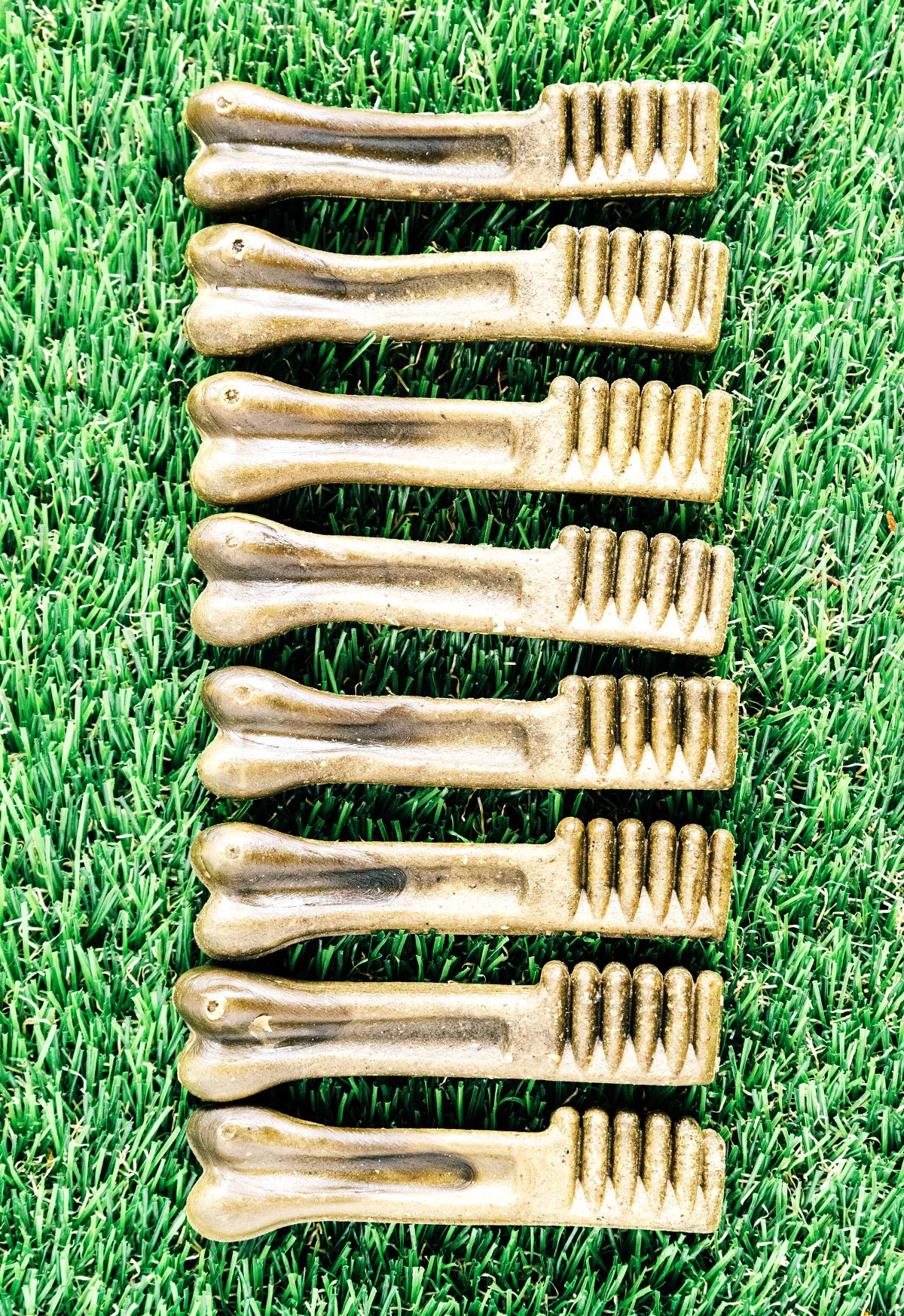
How Do Greenies Clean Dogs Teeth?
Greenies are designed with grooves and ridges to help scrub your dogs teeth. They are also flexible which helps to clean in all the grooves and down to the gum line. The flexible, chewy texture allows teeth to sink into the treats for maximum contact and maximum clean.
The ingredients in Greenies have also been shown to prevent regrowth of tartar. This helps manage bad breath which is a huge win in my book! As I mentioned, these should not replace regular vet dental care, but are wonderful in the interim.
When Should I Give My Dog Dental treats?
Veterinarians recommend dental chews be given once a day. You can obviously give your dog less, but one a day is what has been shown to reduce tartar and bad breath.
If your dog has a sensitive stomach, it may be best to give them dental chews less frequently, as too many can make them sick. This is caused by the chews not being digested or being swallowed in large pieces.
These should be given under supervision to ensure they are fully chewed. They are not considered suitable for pups less than 6 months of age.
Top Vet Recommended Dental Chews for Dogs
While there are a variety of different dental chews on the market, not all of them are created equal. Some dental chews are better than others at helping to clean teeth and freshen breath.
Here are three of the top vet-recommended dental chews for dogs:
- Greenies Dental Chews
- C.E.T. VeggieDent Chews
- Nylabone DuraChew Dental Chew Bones
All three of these dental chews are designed to help clean teeth and freshen breath. Theyre also safe for most dogs to consume on a regular basis. However, its always best to speak with your veterinarian before giving your dog any new type of food or treat.
Dental Chew Alternatives
Greenies and other dental chews can be a a healthy addition, in moderation, to your pups diet. But if youre not sold on dental chews, there are alternatives your pup may like! These all work by scraping off the tartar as your dog chews:
Or for an easy breath freshener, try our homemade dog breath mints!

